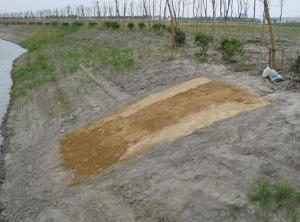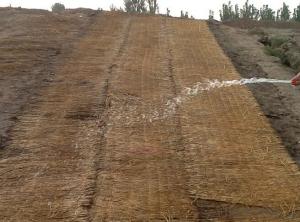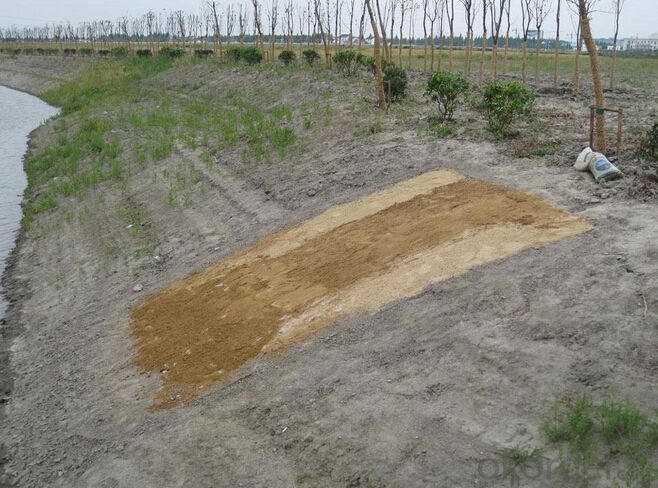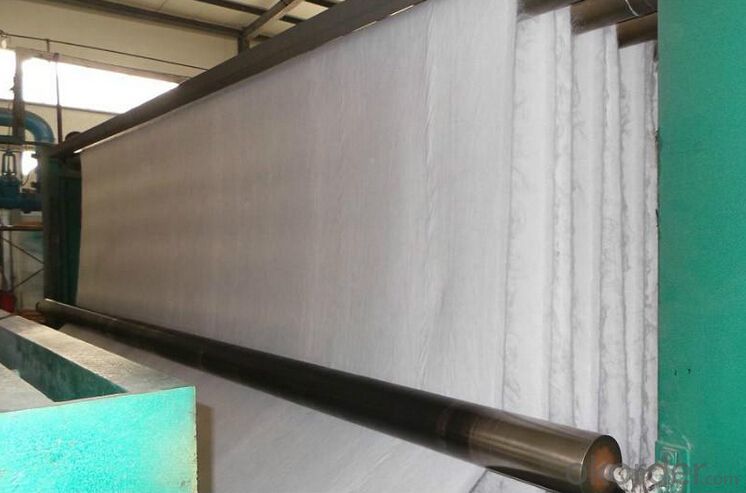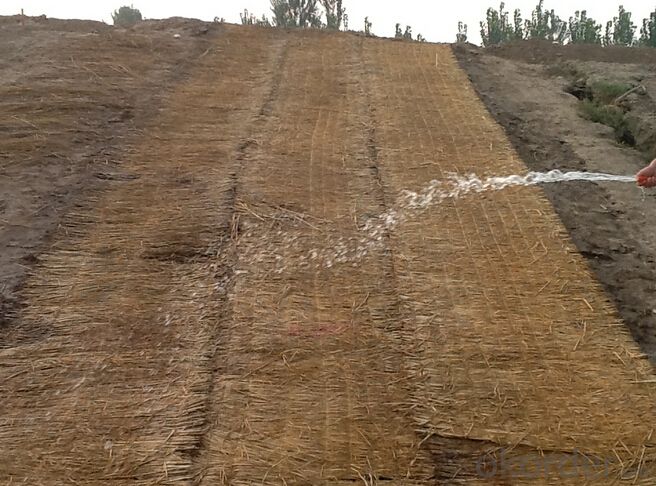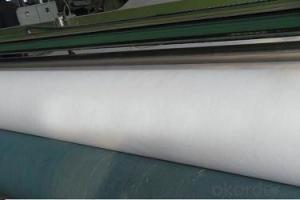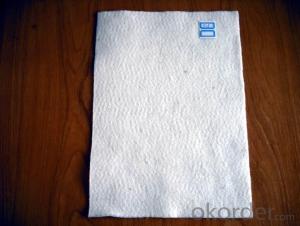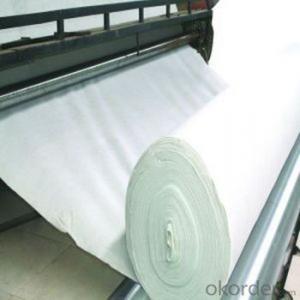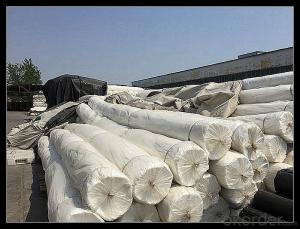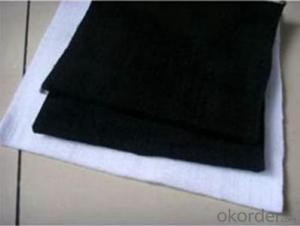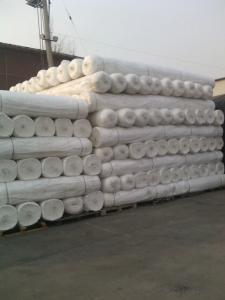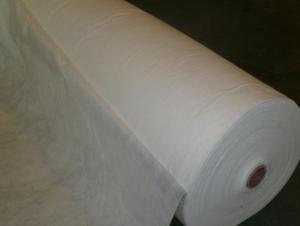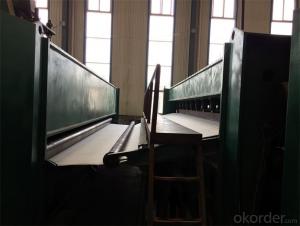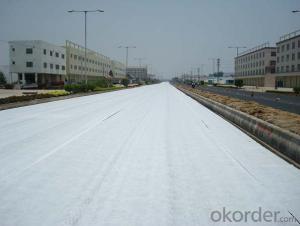Geotextil No Tejido Precio - Non-Woven Polyester and Polypropylene Nutrition Geotextile
- Loading Port:
- Qingdao
- Payment Terms:
- TT OR LC
- Min Order Qty:
- 5000 m²
- Supply Capability:
- 2000000 m²/month
OKorder Service Pledge
OKorder Financial Service
You Might Also Like
Nutrition geotextile in water environmental engineering .
Specification:
Geotextile has excellent permeability, acquired, durability, which can be widely used in railway ,highway, movement hall,Dams,hydraulic structures hence hole, coastal shoal, reclamation,environmental protection and other projects. The main products are Synthetic staple fibers needle punched nonwoven geotextiles and split film yarn woven geotextiles.
Product Feature:
1. Simple and fast construction
2. Achieve the greening effect quickly after construction
3. Due to the grass and composite fiber fabrics become into one integration, so it has the ability of certain degree of flow resistance for the water rising before the grass survive.
4. Composite fiber fabric is a continuous structure from slope top to slope toe, both ends are fixed, has high water flow resistance.
Technical Specification
5.0 m length and 1.05 m width. Reverse side all used filter material. Grass seeds: Bermuda grass (warm season grass), Bahia grass (warm season grass), Kentucky bluegrass (cold season grass), Tall fescue grass (cold season grass), Red fescue grass (cold season grass). Plant height: 0.1 ~ 0.5 m.
| NO. | Items | Specification | Notes | |||
| 1 | Total unit area weight g/sq.m | ≥380 | ||||
| 2 | dimension | width m | 1.0~2.0 | |||
| length m | as per user’s request | |||||
| 3 | Composite fiber fabrics | Material | Polyester Fiber | High strength PET | ||
| Unit area weight g/sq.m | ≥160 | |||||
| Mesh dimension mm | 8×8 | |||||
| Extension strengh kn/m | ≥11 | MD & CD | ||||
| 4 | Filtra layer | Material | Polyester non woven geotextile | |||
| Unit area weight g/sq.m | ≥40 | |||||
| 5 | Grass seeds, Fertilizer | Type | According to actual situation choose 3~5 grass seeds | |||
| Plant height m | 0.1~0.3 | |||||
| 6 | Fiber layer | Material | wood pulp cellulose | |||
| Unit areaweight g/sq.m | ≥15 | |||||
| 7 | flow resistance | ≥4 | not allow appear scour, suction and blanket turn-over etc. damage phenomenon | |||
| M/s | ||||||
| 8 | Anti-UV strengh conservation rate % | 65~80 | 3000hrs Continuously exposure 3000hrs | |||
| 9 | Supporting spare parts | ABS fastening nail | Material | ABS Resin | Fixed between two blankets by length direction | |
| Fiber diameter mm | 35 | |||||
| Nail length mm | 325 | |||||
| Lnail | Material | Steel wire (content 10% zinc-aluminium alloy) | Used to fix single blanket | |||
| Fiber diameter mm | 4 | |||||
| Nail length mm | 200 | |||||
| ABS connecting nail | Material | ABS Resin | Used in the slope between the two blankets ( width direction) | |||
| Nail length mm | 38 | |||||
| Connecting fiber | Material | High strength Polypropylene | Used in the slope between the two blankets ( width direction) | |||
| Length mm | Cut as per request | |||||
APPLICATION:
Generally laid on the river channel, slope protection etc. slope revetment projects, to control the water erosion, soil loss, meantime can reach the effect of slope ecological restoration and landscape greening, making river back to natural.
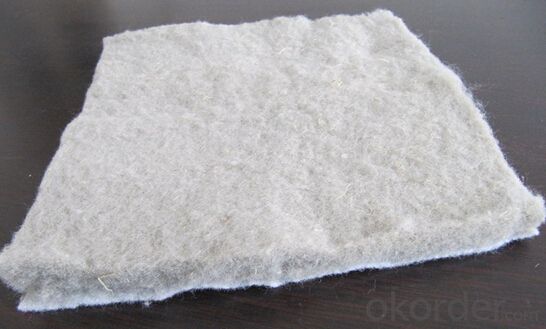
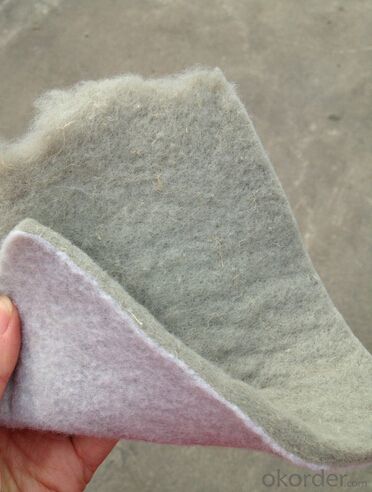
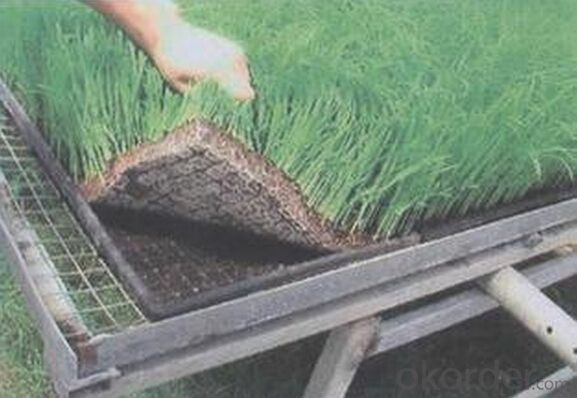
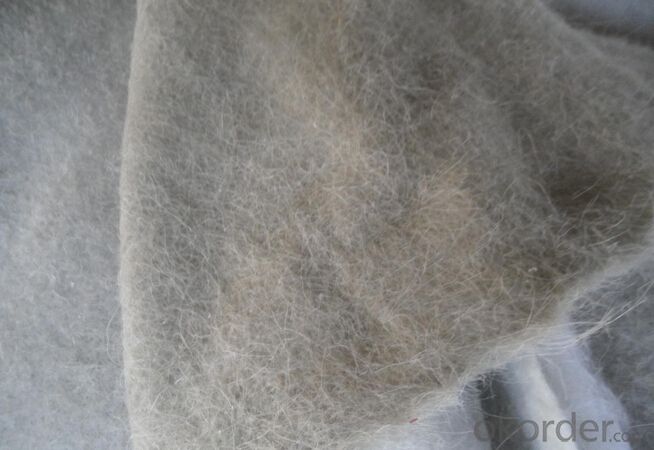


- Q: How do geotextiles help in stabilizing embankments?
- Geotextiles help in stabilizing embankments by providing reinforcement and erosion control. They are placed within the soil layers, acting as a barrier to prevent soil movement and promote stability. The geotextiles increase the shear strength of the soil, reducing the risk of slope failure. Additionally, they allow for water drainage while preventing the loss of fine particles, therefore minimizing erosion and maintaining the integrity of the embankment.
- Q: How do geotextiles help with embankment stabilization?
- Geotextiles aid in embankment stabilization by providing reinforcement and preventing erosion. They act as a barrier against soil movement, distributing loads and reducing the risk of slope failure. Additionally, geotextiles enhance drainage and filtration, allowing water to pass through while retaining soil particles. This combination of functions helps maintain the stability and longevity of embankments.
- Q: How do geotextiles affect wildlife habitats?
- Geotextiles can have both positive and negative effects on wildlife habitats. On one hand, they can be used to protect and restore ecosystems by preventing soil erosion, stabilizing slopes, and controlling sedimentation. This can create favorable conditions for wildlife by preserving natural habitats and preventing habitat loss. On the other hand, improper installation or use of geotextiles can disrupt natural processes, such as water flow, and alter the composition of habitats. Therefore, it is crucial to consider the specific application and environmental context when assessing the impact of geotextiles on wildlife habitats.
- Q: What is the meaning of the process equipment and equipment for producing geotextiles?
- What is the meaning of the process equipment and equipment for producing geotextiles?
- Q: Can geotextiles be used in erosion control in stormwater detention ponds?
- Yes, geotextiles can be used in erosion control in stormwater detention ponds. Geotextiles are commonly used as a protective layer to prevent soil erosion and stabilize slopes in various engineering applications, including stormwater management. By providing reinforcement and filtration, geotextiles help to control and reduce erosion caused by stormwater runoff in detention ponds, ensuring the long-term stability and functionality of these structures.
- Q: Can geotextiles be used in shoreline erosion control projects?
- Yes, geotextiles can be effectively used in shoreline erosion control projects. Geotextiles are permeable fabrics that can be installed along shorelines to stabilize the soil and prevent erosion caused by waves and currents. They can be used as a layer to separate the soil from the water, allowing for water filtration while reducing soil erosion.
- Q: How do geotextiles help with soil stabilization?
- Geotextiles help with soil stabilization by acting as a barrier between the soil and other materials, such as water or aggregates. They prevent soil erosion, promote drainage, and enhance soil strength, ultimately improving stability and preventing the loss of soil particles.
- Q: How do geotextiles help in preventing the migration of fine particles in soils?
- Geotextiles help in preventing the migration of fine particles in soils by acting as a barrier or filter that allows water to pass through while retaining the particles. This prevents the particles from being eroded or washed away by water flow, thereby stabilizing the soil and reducing the risk of erosion.
- Q: Are geotextiles suitable for use in high-traffic areas?
- Yes, geotextiles are suitable for use in high-traffic areas. Geotextiles are durable and provide reinforcement and stabilization to the soil, making them ideal for use in areas with heavy foot or vehicle traffic. They prevent soil erosion, distribute loads, and increase the longevity of the pavement or surface, making them a reliable choice for high-traffic areas.
- Q: How are geotextiles used in sports field construction?
- Geotextiles are used in sports field construction to enhance the stability, drainage, and overall performance of the playing surface. They are typically installed as a layer between the subgrade and the topsoil, acting as a barrier to prevent the mixing of different soil layers while still allowing water to permeate through. This helps in preventing the formation of puddles and maintaining a consistent playing surface. Additionally, geotextiles can aid in soil stabilization, reducing the risk of erosion and promoting better turf growth.
Send your message to us
Geotextil No Tejido Precio - Non-Woven Polyester and Polypropylene Nutrition Geotextile
- Loading Port:
- Qingdao
- Payment Terms:
- TT OR LC
- Min Order Qty:
- 5000 m²
- Supply Capability:
- 2000000 m²/month
OKorder Service Pledge
OKorder Financial Service
Similar products
Hot products
Hot Searches
Related keywords

